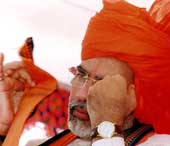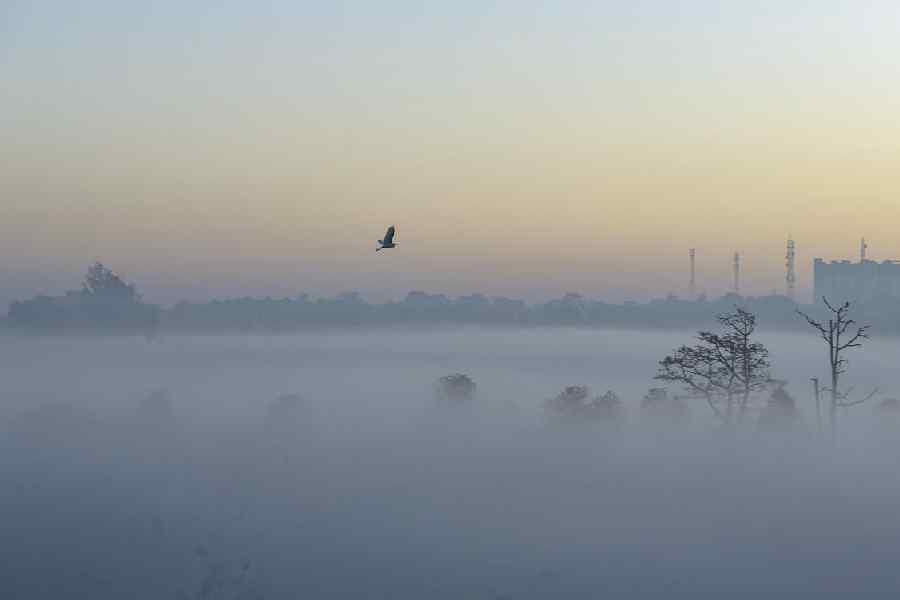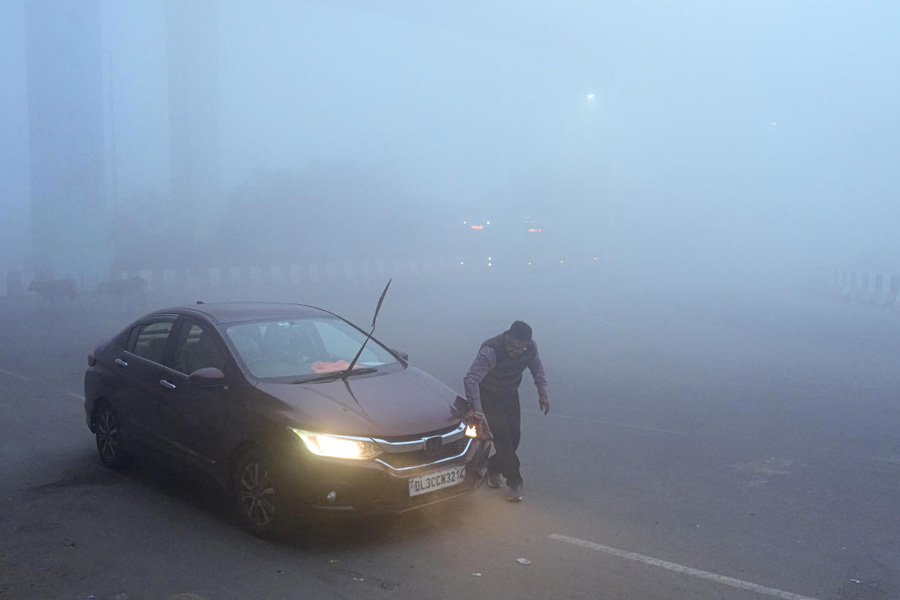|
|
The author is an independent researcher and political analyst This article was written prior to the attack on the Swaminarayan temple
A fortnight is a long time in politics. But it is enough to show how far a ruling party out to win at all costs can stoop. It also reveals the mood of panic in the Bharatiya Janata Party’s managers that drives them to inculcate deeper divisions among the people at large. The prime minister spoke in tones of compassion in New York. His own party men, whether in Visavadar or Varanasi, New Delhi or Jammu adopted a strident, unrepentant stance. One speaks of moderation; the other advocates its polar opposite. There is a change in the wind, and one that augurs ill for the country at large.
Leading the charge was the Hindu hriday samrat or ruler of the hearts of Hindus, the chief minister of Gujarat. First came the scoop by a news channel which broadcast audio tapes of Narendra Modi’s controversial speech where he asked people to “teach a lesson” to those who have large families. To drive home the point, he explicitly referred to ham paanch, hamare pachis, an allusion to Muslim families which practise polygamy and have many offspring.
Coming as it did after weeks of attacks, and months of tardy relief measures for the afflicted, this is spreading hatred among different sections of the population. Not only is Modi unapologetic about the massacres, he is penalizing honest officers in the police and intelligence services who are simply doing their duty. Modi’s speech in Besarji, Mehsana, one of the worst affected districts in the whole state remained at the centre of the storm. But the national commission for minorities dealt gingerly with the matter, careful not to embarrass the ruling party in any way. Modi has toned down his utterances but the message is clear.
Soon after strong denials of his choice of words, came the give away. The Vishwa Hindu Parishad announced plans to distribute copies of the audio in order to warn India and Indians in general and Hindus in particular against the menace of minority inspired separatism. Violence in deeds can now be backed up with open contravention of the law of the land and by an elected head of a state government, no less. In case there was any doubt, the high command of the party also chipped in congratulating the chief minister on his success in assuaging Gujarati pride and Hindu honour.
Where this is taking the party is clear as crystal. Atal Bihari Vajpayee’s power is ebbing by the day. He is able to manoeuvre by aligning with vocal lobbies like the newly formed bloc against disinvestment. He strikes the right note at after dinner sessions and parties abroad. But his grip over his party, never very firm, is now loose. The second line of leaders is more strident, raring to go ahead with the core ideology of the party and unencumbered by any serious commitment to a common minimum programme. Vajpayee may be the head but the body, heart, and mind are all way beyond the kind of rhetoric first popularized by L.K. Advani in his rath yatra of 1990.
Yet, there is a difference. Old and experienced campaigner that he was, the then party president was careful in his choice of words. He never spoke of Muslims, only of “minority-ism” and the “pseudo secular” creed. He took pains to avoid joining in slogans for the demolition of the Babri Masjid, instead asking that the stone be shifted to a new spot. But there is little doubt; he opened up the political space for a more strident, even virulent, brand of rhetoric. First it was the VHP with choice demagogues like Sadhvi Rithambara. Now, it seems the dividing lines between the party and the fraternal organizations are melting away.
At every place and on any occasion that presents itself, partymen seize the initiative and propagate their own ideological agenda. Being in power gives them the added advantage of having the state machinery at their beck and call. Patronage of culture, education and art are also useful levers in the service of the cause. In the process, the party is opening up Pandora’s boxes to reap short-term gains. It will have little control over the longer-term consequences, which will be deeply damaging to the body politic and the integrity of institutions.
Modi is not alone nor is he as exceptional as is often believed. In the state assembly elections in Jammu and Kashmir, the Rashtriya Swayamsevak Sangh has even backed three rebel candidates of the Jammu State Morcha against the official party candidates. Not even serving ministers of the Union cabinet are immune from this tendency. In her speeches in Jammu, the information and broadcasting minister, Sushma Swaraj, said she saw “nothing wrong” in the demand to divide the state into three. This is in direct conflict with the proclaimed policy of the government laid down in the house by the deputy prime minister, L.K. Advani.
But the allies are divided, the opposition is still to get its act together. The balance of forces in the country is slowly titling against the ruling coalition on account of its non-performance. In such a scenario, the appeal of ideology grows stronger by the hour. And no one symbolizes or embodies this as well as Narendra Modi. Having seen off a determined prime ministerial bid to oust him at the Goa conclave in April, he has become a symbol of the new way forward. Even his mass contact programme is cited as the model for the new nationwide drive to reach out to the villages with the message of the party.
Clear as the tilt is, the implications are deeply disturbing. A speech of this sort by an elected official ought to attract investigation, and possible filing of charges. There are enough rules in the statute book against preaching such hatred. One thing is clear. The party’s ability to hold such tendencies in check is ebbing. It is not returning to its roots. More than that, it is amplifying and playing on a message which is simple but chilling. A polarized electorate and the politics of hate can be tried out. Gujarat, as Ashok Singhal said, is site for an experiment, and the aftermath of Godhra a test case. Make no mistake. It is not Muslims or minorities, human rights advocates or the opposition whose future is at stake. Such talk is as grave a threat to us all as the politics of the late Jarnail Singh Bhindranwale.
It does more than “semitise Hinduism” as S. Gurumurthy, the RSS ideologue put it. It valorizes intolerance and celebrates violence against innocents. It is no more exalted than the claims of Islamist terrorists or the Liberation Tigers of Tamil Eelam cadre who see an enemy in each person who stands up to them. No wonder some of Gujarat’s own well known religious figures have disassociated themselves from the politics of “gaurav”, or pride, a misnomer if there ever was one. It strikes at the heart of the idea of India. It is not Modi versus Vajpayee: that is a political sideshow, crucial as it may be. The real issue is Modi versus the spirit of the Union of India. A troubling question and one all of us will have to come face to face with, sooner rather than later.












